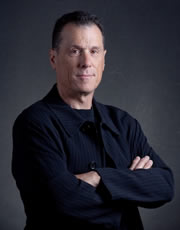 Why Make Art?
Why Make Art?
In the last decade, Art, especially as a subject in higher education, has been re-purposed as a part of “creative commerce” or as an “economic engine”, capable of contributing and playing a part in what American economist, professor and social scientist Richard Florida, referred to as the “Creative Class.” Suddenly, artists were seen as a part of a valuable and lucrative subset of business; valuable not for their ideas, but for their contribution to capitalism. Who would deny the rights of artists to make a living, or to the equivalent of a living wage? However, the question of why we make art and why we encourage students to study the arts in general may have much less to do with commerce than with other, more egalitarian or personal beliefs.
Greater Good: Science of a Meaningful Life asked seven artists across a number of disciplines why they make art. In all of the artist’s responses, there is an underlying theme; a sense of connection with something outside of themselves, in short, a sense of belonging, of purpose and of connection. Words like mortality, loss and empathy recur across their responses as those interviewed recount why they do what they do.
Perhaps the commerce of which art may play a part is less a driving force and more of a by-product of a particular kind of investment. One that flows from the idealism that still rises to the surface of both global and local cultures. When asked why he makes art, Pete Docter, who has been involved in some of Pixar Studio’s most popular animated features, including Toy Story, A Bug’s Life, Cars, and Wall-E, and best known as the director of the Academy-Award-winning Monsters, Inc. notes:
I’m sure there is also that universal desire to connect with other people in some way, to tell them about myself or my experiences. What I really look for in a project is something that resonates with life as I see it, and speaks to our experiences as humans.
My father went to art school on the G.I bill after WWII where he specialized in sculpture and and earned a degree in arts and crafts. He subsequently became a commercial lithographer, but almost every night went to his workshop where he carved totems, tikis and larger representational forms. Almost no one saw his work, yet he persisted. I realized much later that this was how he processed the war, by creating a space in which he memorialized the carvings and images that he saw in the South Pacific. It was how he carved his own existence into being.
Read the full article on “Why We Make Art” here.
Best,
Douglas Rosenberg
Chair, Art Department
